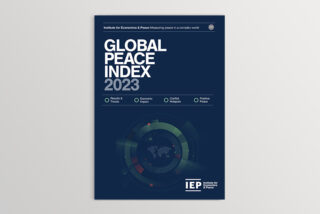In an era where nearly 66% of the global population is connected to the internet, the relevance of analysing information is paramount. However, the accessibility and utilisation of such a vast resource are not uniform across all communities. While some lack access to online information, others, despite having abundant access, struggle with the essential skills needed to make informed decisions regarding the multitude of issues circulating the internet today.
The internet has evolved into a breeding ground for misinformation and disinformation. A concerning trend emerges as individuals lacking Media and Information Literacy (MIL) skills falls to the influence of distorted information. The repercussions are far-reaching, ranging from the propagation of racist and hate speech to the dissemination of conspiracy theories. Such falsehoods have tangible and factually incorrect effects on how people perceive the flood of new and pressing information provided on a daily basis.
In response to this digital issue, the United Nations Educational Scientific and Cultural Organisation (UNESCO) has formulated a policy guide outlining strategies for implementing better MIL. Central to this approach is the recognition that MIL is a powerful tool in combating the spread of misinformation.
Media and information literacy empower individuals to develop critical thinking skills, enabling them to navigate the intricate web of information with discernment. In essence, literacy becomes a survival tool, encouraging the empowerment of individuals in the face of the information onslaught.
The impact of social media disinformation on real-life events, such as presidential elections, emphasises the need for heightened MIL. The World Health Organisation (WHO) came up with the term ‘infodemic’ to counteract the negative effects of spreading misinformation online during the COVID-19 pandemic, especially regarding the vaccines. The war in Ukraine-Russia is also another example of how disinformation is used to spread and influence public perception. The Russian government has been analysed to disseminate disinformation regarding Ukraine through Twitter (now called X), which further emphasises the necessity for MIL. Some news outlets prioritise dramatized tragedies to boost traffic and views, often presenting an incomplete or exaggerated narrative for shock value.
The digital divide widens as discrepancies emerge between those with seamless access to information and those left on the periphery. Beyond merely identifying misinformation or fake news, MIL extends to fostering critical engagement with the media consumed. As technology increasingly becomes an integral part of children’s lives, there is a parallel need to instil skills that go beyond consumption—skills that empower them to contribute to self-expression in a meaningful and responsible manner.
MIL serve as indispensable tools in navigating the complex and dynamic digital landscape. As the world grapples with the challenges posed by the information age, building these skills becomes not only a necessity but a collective responsibility to ensure a more informed, empowered and resilient global society.
In the quest for MIL, it becomes evident that these skills are not only personal assets but crucial components in the broader framework of Positive Peace. The “free flow of information” Pillar is pivotal in this pursuit, advocating for universal access to free and independent media. The key lies in making knowledge available to everyone, empowering individuals to make informed decisions and fostering a society that thrives on transparency and openness.
Under the umbrella of Positive Peace, the free flow of information Pillar aligns with the notion that an informed population is essential for a better society. This Pillar echoes the belief that access to unbiased and independent media is a fundamental right that should be extended to every individual, irrespective of their background or location. It is through the democratisation of information that societies can make strides towards better decision-making, understanding and collaboration.
However, achieving this vision requires a holistic approach. Beyond MIL, other Pillars of Positive Peace, such as the “well-functioning government” is relevant to the cause. Positive Peace can be fully optimised by improving all eight Pillars, as refining the majority or all the Pillars result in achieving the prime environment for human potential to flourish. Meaningful policies must be implemented to educate children on how to make informed decisions. Trust in the government becomes integral to this process, as individuals need assurance that media censorship is not manipulated for ulterior motives. As the world navigates the complexities of the information age, it is crucial to build MIL through the lens of Positive Peace.
